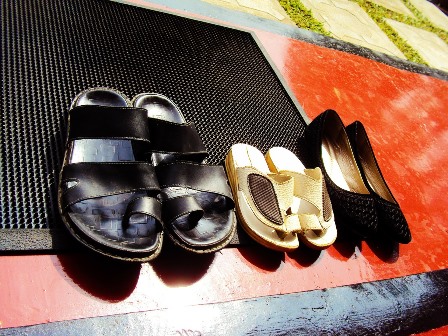Extreme heat, dust particles, atmospheric pollution, and even thunderstorms can trigger breathing difficulties for people with asthma living in hot climates. Dr. Sumita Khatri, M.D., co-director of the Asthma Center at Cleveland Clinic in the United States, says hot temperatures increase the levels of atmospheric ozone in the air. In addition, in arid conditions, there can be an increased amount of microscopic particles suspended in the air (known as particulate matter or PM), such as dust from sand, crustal elements from soil/dirt, or from tire and brake related sources. All of these can trigger breathing problems for people with asthma.

Although each person is unique and experiences asthma differently, Dr. Khatri notes that abrupt changes in the environment can put the body under stress. She flagged up several factors that could trigger asthma attacks, also known as episodes, in susceptible patients – and suggested ways to mitigate risk.
Learn Your Triggers: When you have difficulty breathing, take note of those things that might be triggers, and consider keeping a diary with you to write them down.
Avoid Triggers, If Possible: Try to avoid those things that are likely to cause an asthma attack, such as allergens, pollution and dust, by staying inside when it’s dusty; avoiding travel during busy periods on the road; or keeping air-conditioning at a temperate level to reduce the shock when moving between indoors and outdoors.


Follow Medication: Consult a physician and ensure you use the prescribed medication. Medications can reduce the likelihood of an asthma attack, and also relieve the symptoms when they occur.
Ventilation And Air-Conditioning: Indoor air quality is important, so make sure the home is sealed against dust pollution and that air-conditioning is cleaned and maintained. Also, ensure that there is some ventilation and that air is not simply re-circulated within the building.
Wash Or Change Fabrics And Textiles: Fabrics, including furniture, curtains and rugs, can all trap dust and other irritants. Clean them thoroughly and frequently, or minimise their use. Tile, stone, or wooden floor, rather than carpet, can dramatically improve your indoor environment and can be maintained by wiping down with moist cloth or mop.
Keep The Home Clean: Mould and mildew, particularly in areas prone to damp, such as washrooms or underneath sinks, and dust in the corners of the room, can all be triggers; they don’t have to be visible to be harmful.


Eliminate Pests: Dampness can attract unwelcome visitors. In addition to carrying multiple diseases, cockroaches can trigger an allergic response in some people, as can droppings from rodents.
Don’t Smoke: Smoking should be avoided absolutely. Second-hand smoke is a severe health risk and serious indoor pollutant, and smoke particles continue to hang in the air long after the smoke is no longer visible.
Leave Your Shoes At The Door: Our shoes can carry allergens in from the outdoors. Taking them off when we enter the building keeps those allergens outside where they belong.
